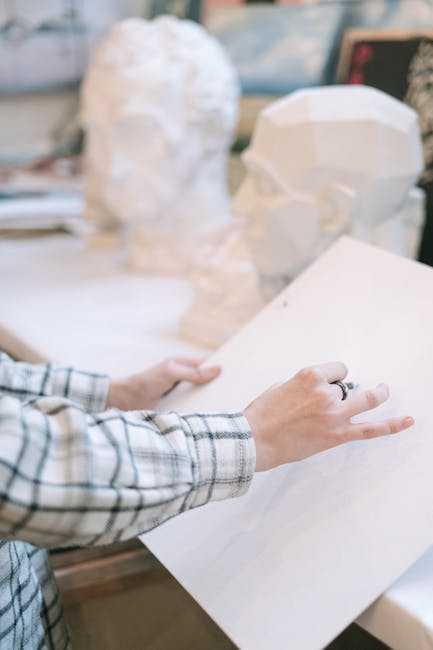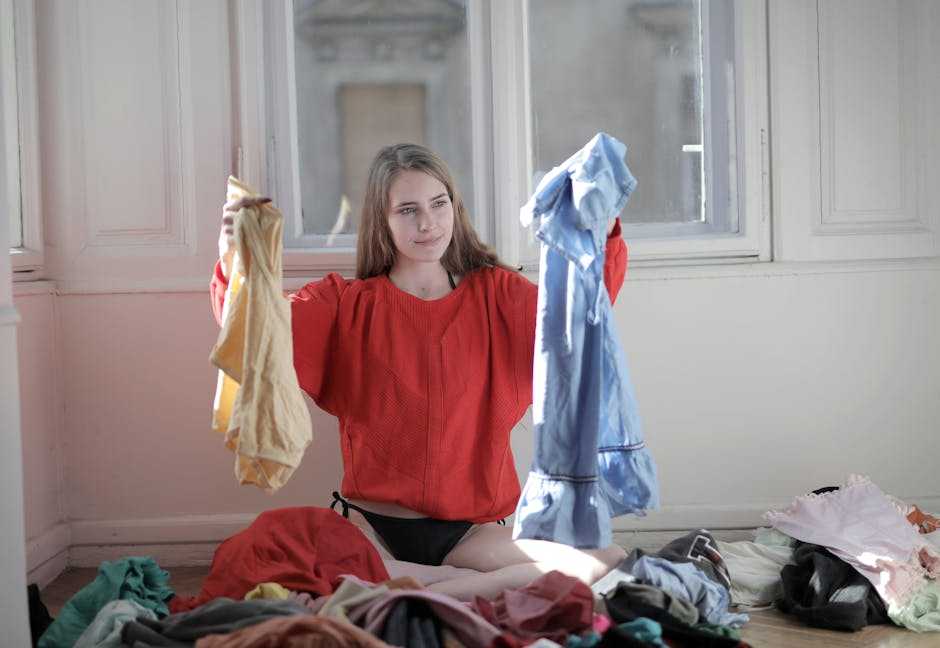Table of Contents
- Exploring the Emotional Depth of Abstract Paintings
- Techniques and Styles That Define the Abstract Art Movement
- Choosing the Right Abstract Artwork for Your Space
- How to Appreciate and Critique Abstract Art: A Beginners Guide
- Q&A
- The Way Forward
Exploring the Emotional Depth of Abstract Paintings
Abstract paintings invite viewers on a captivating journey through a kaleidoscope of emotions that often defy traditional interpretations. Each stroke of the brush and splash of color is meticulously chosen, allowing artists to express feelings that can range from joy and tranquility to chaos and despair. The viewer’s personal experiences and emotions influence their interpretation, creating a unique bond between the piece and the observer. This subjectivity is what makes abstract art profoundly powerful; it transcends verbal communication and connects with the soul.
One of the remarkable qualities of abstract art is its ability to evoke emotions without relying on recognizable forms or figures. Instead, artists utilize elements such as color, line, texture, and shape to convey feelings. For instance, bold colors can express intense emotions, while softer hues may evoke serenity. The interplay of different textures can symbolize conflict or harmony, adding further layers to the emotional narrative. This freedom from representation allows both artists and viewers to explore and reflect on deeper sentiments.
Moreover, the context in which a painting is created can significantly enhance its emotional depth. An understanding of the artist’s background, the era of creation, and even the materials used can add a richer dimension to the viewing experience. For example, a piece painted during a tumultuous time in an artist’s life might resonate differently compared to one created in a period of peace and happiness. By acknowledging these contexts, viewers can appreciate not just the artwork itself but the emotional journey that accompanied its creation.
| Element | Emotional Impact |
|---|---|
| Color | Can evoke specific feelings; e.g., red for passion, blue for calm. |
| Line | Curved lines suggest movement or warmth, while harsh angles can produce tension. |
| Texture | Creates depth; smooth surfaces may induce tranquility, rough textures can induce discomfort. |
| Shape | Organic shapes often feel more welcoming, whereas geometric shapes may suggest order or rigidity. |
Ultimately, engaging with abstract paintings is an invitation to explore one’s emotions and confront them in a visceral way. As viewers immerse themselves in the vibrant worlds depicted on canvas, they are challenged to delve into their interpretations and feelings. This emotional engagement not only enriches the experience of the artwork but also offers a mirror reflecting one’s inner life—a truly transformative encounter that can resonate long after one steps away from the canvas.


Techniques and Styles That Define the Abstract Art Movement
Abstract art is a captivating interplay of colors, shapes, and forms that transcends traditional representation. Its origins can be traced back to the early 20th century, influenced by movements such as Impressionism and Cubism, but it has grown into a unique art form characterized by distinct techniques and styles. One of the foundational techniques is color field painting, where large expanses of color are employed without the use of significant shapes or outlines. This approach invites viewers to immerse themselves in the emotional resonance of the color itself.
Another notable style within the movement is gestural abstraction, which emphasizes the physical act of painting. Artists like Jackson Pollock and Franz Kline exemplified this through dynamic brush strokes and spontaneous drips, creating works that are not just images, but records of the artist’s movements and emotions. This method often leads to a dramatic interplay of light and shadow, enhancing the viewer’s experience by adding depth and texture.
In addition to these techniques, geometric abstraction offers a contrasting perspective. Artists utilize simple shapes and patterns to create compositions that are both orderly and expressive. This style often incorporates symmetry and repetition, resulting in visually striking works that appeal to the viewer’s sense of logic and aesthetic balance. Noted practitioners like Piet Mondrian and Kazimir Malevich have mastered this technique, reducing elements to their essential forms.
| Technique/Style | Key Features | Notable Artists |
|---|---|---|
| Color Field Painting | Large areas of color, minimal shapes | Mark Rothko, Barnett Newman |
| Gestural Abstraction | Dynamic brushstrokes, physical expression | Jackson Pollock, Willem de Kooning |
| Geometric Abstraction | Shapes, symmetry, orderly compositions | Piet Mondrian, Kazimir Malevich |
Through the varied , artists challenge traditional perceptions and invite emotional responses. Each method serves not just as a visual representation but as a vehicle for deeper philosophical inquiries, allowing the audience to confront their own interpretations and emotions in ways that resonate personally. This is what makes abstract paintings not just art, but a profound exploration of the human experience.


Choosing the Right Abstract Artwork for Your Space
When it comes to enhancing the aesthetic of your home or office, the right piece of abstract artwork can transform your space. Consider your existing decor style and color palette; this harmonization can elevate the overall vibe of any room. Choose art that either complements or contrasts with these elements to create a captivating focal point. Think about the atmosphere you wish to evoke—whether it’s calm and serene, energizing, or thought-provoking.
It’s essential to reflect on the size and scale of the artwork in relation to your available wall space. Large canvases can make a bold statement and are particularly effective in spacious areas like living rooms or halls, while smaller pieces can create an intimate feel when grouped together. Here are some tips for considering size:
- Measure your wall space: Ensure your artwork fits well without overwhelming the area.
- Consider height: Hang pieces at eye level for best viewing.
- Balance your arrangement: If using multiple pieces, maintain visual equilibrium with varying sizes.
Color psychology plays a significant role in the choice of artwork. Different hues can elicit varying emotional responses, which is crucial to consider based on the purpose of the space. For example, cool colors like blues and greens tend to promote tranquility, while warm tones such as reds or oranges can invigorate the room. Here’s a quick reference on color meanings:
| Color | Psychological Effect |
|---|---|
| Red | Energy and passion |
| Blue | Calmness and relaxation |
| Yellow | Happiness and warmth |
| Green | Growth and harmony |
consider the story or message behind the artwork. Every piece has a narrative, and choosing one that resonates with you can add depth to your space. Abstract art often encourages viewers to interpret the work in their own way, creating a personal connection. Ask yourself what emotions or stories you want your artwork to convey, and select pieces that reflect your values, experiences, or aspirations. This not only personalizes your environment but also prompts discussions and engagement with anyone who visits your space.


How to Appreciate and Critique Abstract Art: A Beginners Guide
Appreciating abstract art begins with an open mind. Unlike traditional art, which often depicts recognizable subjects, abstract art invites viewers to explore emotions and concepts rather than concrete visuals. Take a moment to absorb the colors, shapes, and textures. Think about the feelings they evoke. Ask yourself questions like:
- What mood does the piece convey?
- How do the colors interact with one another?
- Can I discern any movement or rhythm in the composition?
When critiquing abstract art, consider the artist’s intention. Many abstract artists aim to challenge perceptions and provoke thought. Researching the artist’s background can provide insight into their creative process. For instance, they may draw on experiences, emotions, or even techniques from other disciplines. Understanding this context can deepen your appreciation and help form your critique.
Additionally, focus on the technical elements of the artwork. Consider the use of line, color, and form. How effectively do these elements communicate the abstract idea? You can create a simple framework to evaluate each piece systematically. Here’s a basic comparison table to help organize your thoughts:
| Element | Observation | Emotional Response |
|---|---|---|
| Color | Vibrant and contrasting hues | Energetic, uplifting |
| Form | Geometric vs. Organic shapes | Structured or chaotic? |
| Texture | Smooth vs. Rough | Inviting or confrontational? |
don’t hesitate to engage with others about the art. Discussions can expand your perspective and inspire new interpretations. Art communities, whether in person or online, can be incredibly supportive spaces for sharing thoughts and feelings about abstract pieces. Embrace the diversity of opinions; every viewpoint adds another layer to your understanding and appreciation.
